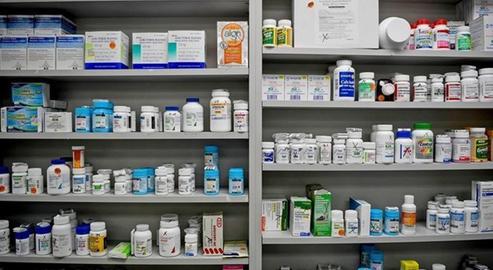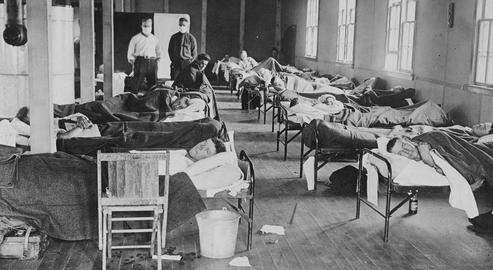“It appears that COVID-19 kills more Iranians infected with coronavirus than the world average because the drugs that are effective in treating or controlling the complications resulting from this sickness are in short supply, or cannot be found at all, and because hospitals are suffering from severe shortages of medical services and facilities to care for their patients. These problems hurt ordinary citizens more,” says Dr. Hiva S., an Iranwire doctor speaking to IranWire about why the coronavirus mortality rate is higher in Iran than the global average.
According to Dr. Hiva, from the three drugs that doctors usually prescribe for patients with coronavirus symptoms, two are in short supply in Iran. The shortage is an important factor in driving up the mortality rate. Reports published by Iranian media confirm [Persian link] these shortages and also point a finger at hoarders.
Hydroxychloroquine, oseltamivir and Coldax are the three medications that are usually prescribed for patients with coronavirus symptoms – now the first two are in short supply in Iran.
“Hydroxychloroquine is primarily used to treat malaria but, of course, it has also been used to treat rheumatoid arthritis,” says Dr. Hiva. “Some clinical reports indicate that a number of coronavirus patients that have been in critical condition have responded positively to this drug and have shown signs of recovery.”
According to Dr. Hiva, hydroxychloroquine has many unwanted side effects and must only be taken under the supervision of a doctor, But it seems a misleading rumor has led to an increase in people using it without a doctor’s prescription.
“Right from the very early days after the coronavirus outbreak was announced, many people bought hydroxychloroquine because they trusted the unscientific claim that it prevents infection by the virus and, in doing so, they put their health and their life in danger. This drug, however, has no effect in preventing coronavirus and, in some cases, it has only helped to treat complications.”
The second medicine, oseltamivir, is a capsule that is also known under the brand name of Tamiflu. According to Dr. Hiva, Tamiflu is an anti-virus drug which is effective in treating type A influenza and H1N1 infection. It has also proved effective in preventing infections for people who have come into contact with type A influenza patients.
“Oseltamivir is a hospital drug and usually you cannot find it in city pharmacies,” he says. “But these days you cannot find it in most hospitals. As a result, doctors give a prescription to the patient’s companions so that they can get it from an outside pharmacy and deliver it to the hospital.”
The third drug is Coldax, a mixture of acetaminophen, antihistamine and ephedrine used to treat a common cold. Dr. Hiva says that this drug is still available at the pharmacies and, if it cannot be found, Cold Stop or Gripin can be used instead.
According to Dr. Hiva, the first two drugs that are necessary to help reduce fatalities due to coronavirus infections are in short supply and are not available to all patients.
“The government and the Health Ministry must supply these drugs,” he says. “Without them, it is inevitable that the rate of fatalities due to coronavirus will be higher than the average global rate.”
The excessive use of vitamin D is another issue that has Iranian doctors worried. According to Dr. Hiva, overdoses of vitamin D are extremely dangerous and can even be lethal.
“Excessive intake of this vitamin can lead to poisoning and results in deposits of calcium in soft tissue such as kidneys, lungs, heart and ears,” he says. “In lungs and in the heart it can lead to complications in these organs and in the ears it can damage hearing and even result in deafness.”
Releasing Patients who Still Need Treatment
Dr. Hiva says that, besides drugs shortages, another major problem in treating COVID-19 patients in Iran is the shortage of respirators and the limited number of beds in hospital intensive care units (ICUs) which, in turn, contributes to the rise of coronavirus fatalities.
“We have to release many patients who still need medical services because we need beds. Often, respirators can be found only in ICUs and there is not enough of them,” he says.
Dr. Hiva adds that another machine urgently needed by hospitals in Iran is an ECMO (Extracorporeal Membrane Oxygenation) system.
“We have a high need for this machine for a patient whose respiratory and blood circulation system cannot provide his body with enough oxygen to live,” says Dr. Hiva. “This machine operates as the patient’s heart and lungs outside his body and it can save some coronavirus patients whose lungs are severely affected.”
Dr. Hiva says that one of the factors contributing the recovery of political figures who have been infected with coronavirus – besides other clinical factors such as each patient’s overall health, which is an important factor itself – is adequate access to drugs and medical services. “As you yourself reported,” he points out, President Hassan Rouhani’s vice president Eshagh Jahangiri was quarantined in his home on the afternoon of Friday, February 28, and a well-equipped medical team has been treating him. He is still in quarantine but, as far as I have heard, his general condition has improved and, as of now, the treatment has been effective.”
In an exclusive report on March 4, IranWire reported that Jahangiri had been infected with coronavirus and had been quarantined in his home since February 28. He has not been seen in public or at cabinet meetings or even in the meetings of the National Headquarters to Contain and Fight Coronavirus since being quarantined. But on March 4, five days after the news of his infection was published, his director of public relations denied [Persian link] the report. Considering the long record of Iranian officials in lying, this denial was not taken seriously.
Dr. Hiva says that, besides secrecy surrounding the coronavirus epidemic in Iran and the mismanagement that has had serious consequences and has helped the spread of the disease, what has made the crisis even worse is the shortage of medical facilities and services.
“As of now, Iran has had the highest death rate in the world among the medical staff who have been treating coronavirus patients, and this is solely the result of the lack of protective facilities and equipment for them. On one hand, health workers does not have access to gloves, gowns and disinfectant gel and they are overworked because of the high number of patients. On the other hand, there are not enough drugs and equipment for treating patients. In other words, both the patients and the doctors are threatened by death at the same time.”
Related Coverage:
IranWire reports on Coronavirus Outbreak in Iran
How Did Iran Fight a Deadly Virus 100 years Ago?, 11 March 2020
Coronavirus Kills 6 to 8 People Every Day in an Iranian Hospital, 10 March 2020
"Clerics Warned about Coronavirus, but the Revolutionary Guards Called it a Western Conspiracy", 9 March 2020
"If We Don't Act Quickly Up to 700,000 Iranians will Contract Coronavirus", 7 March 2020
Iran's Football Competitions are Canceled Until Further Notice, 7 March 2020
Iran’s War Veterans are Most Vulnerable to Coronavirus, 5 March 2020
Iranian Nurses Risk Their Lives Fighting Coronavirus, Wednesday, 4 March 2020
Coronavirus and the Legitimacy of the Regime, 3 March 2020
visit the accountability section
In this section of Iran Wire, you can contact the officials and launch your campaign for various problems


























comments